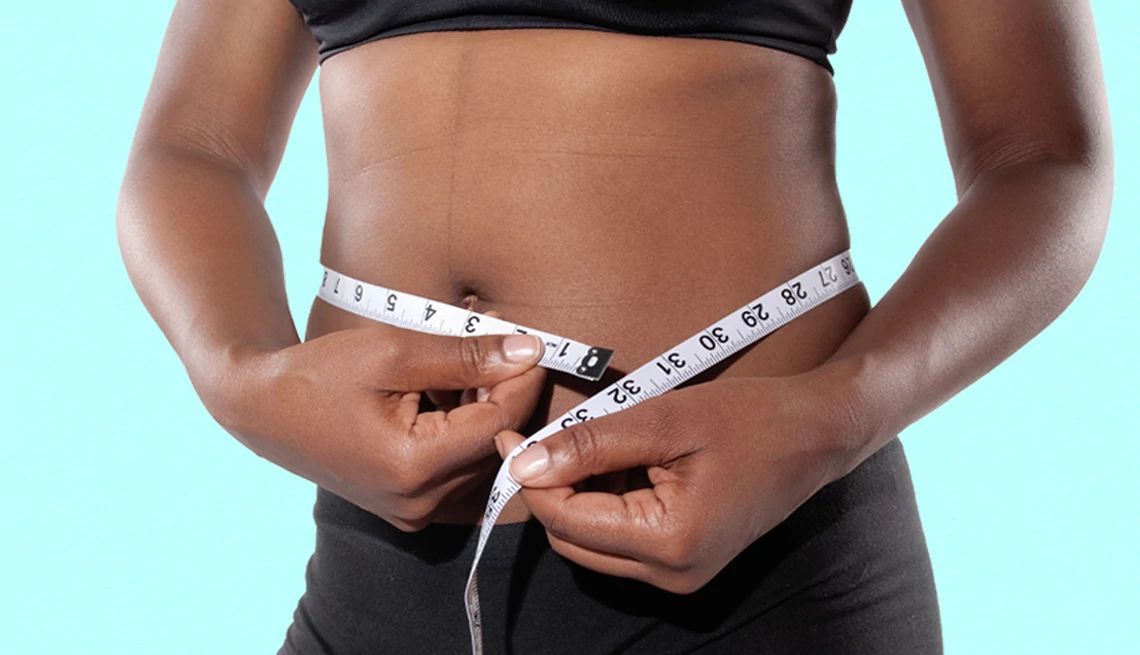AARP Hearing Center


If you know you need to shed some pounds, you might wonder how much weight you should aim to lose. What is your ideal weight?
Figuring out the right weight for you can be complicated, weight loss experts say.
For decades, many health care providers have relied on body mass index, or BMI. BMI is simply a mathematical formula in which weight is adjusted for height.
But experts say BMI has pitfalls. In particular, BMI doesn’t measure how much body fat you have — a key factor in assessing your health and your risk of chronic illness.
Nowadays, most health care providers consider BMI along with a variety of other factors to determine the best weight for you, including age, body fat percentage, waist circumference and whether you have any weight-related health conditions.
“We’re focusing more now on health beyond the scale,” says Robert Kushner, M.D., an obesity medicine specialist at Northwestern University Feinberg School of Medicine. “We are using more of an individual approach.”
How to calculate your ideal weight using BMI
BMI is your weight in kilograms divided by your height in meters squared. It was invented in the early 1800s and eventually used by insurance companies as a way to determine a person’s risk of death. “BMI is a very quick and dirty way to get a sense of somebody’s risk … but as the sole way to make medical decisions for a person in front of you, it can miss a lot,” says Melanie Jay, M.D., director of the Comprehensive Program on Obesity Research at NYU Grossman School of Medicine.
Calculate your BMI using the AARP BMI calculator.
The Centers for Disease Control and Prevention (CDC) says that a healthy BMI is between 18.5 and 24.9, that a BMI between 25 and 30 is considered overweight and that a BMI over 30 is considered obese for all adults over age 20.
That means the ideal weight for a 5-foot-4 woman would be 108 to 145 pounds, according to the CDC. The ideal weight for a 6-foot man would be between 137 and 183 pounds.
The problems with BMI
While BMI can give you a ballpark idea of the ideal weight for your height, it doesn’t tell you how much fat you have compared to muscle and bone. That means a bodybuilder or a football player with a lot of muscle can have a BMI that inaccurately categorizes them as overweight or obese.
On the other hand, “you can have a BMI in the ‘normal’ range, but if you have prediabetes or a lot of weight gain around your belly, you still might need to take measures to improve your health,” Jay says.
It’s especially tough to know the best BMI for older adults, who tend to lose muscle as they age, says Andrea Coviello, M.D., an endocrinologist and obesity medicine specialist who is medical director of the University of North Carolina Medical Weight Program.
When you lose body mass, you don’t just lose fat, you may also lose muscle mass, Coviello says. “We worry more about the issue of muscle mass in older individuals because of the issue of frailty. What we don’t want is a decrease in physical function.” Incorporating cardio exercise and strength training into your weight loss plan can prevent loss of muscle mass.

































































More From AARP
How to Lose Weight in Your Face
8 tips to slimming down your face, chin and neck
Walking Plans for Weight Loss
Burn calories and belly fat with these tips
Free Excerpt From the AARP Book 'The Whole Body Reset’
Putting on pounds no matter what you do? Learn how protein timing can stop age-related weight gain
Recommended for You